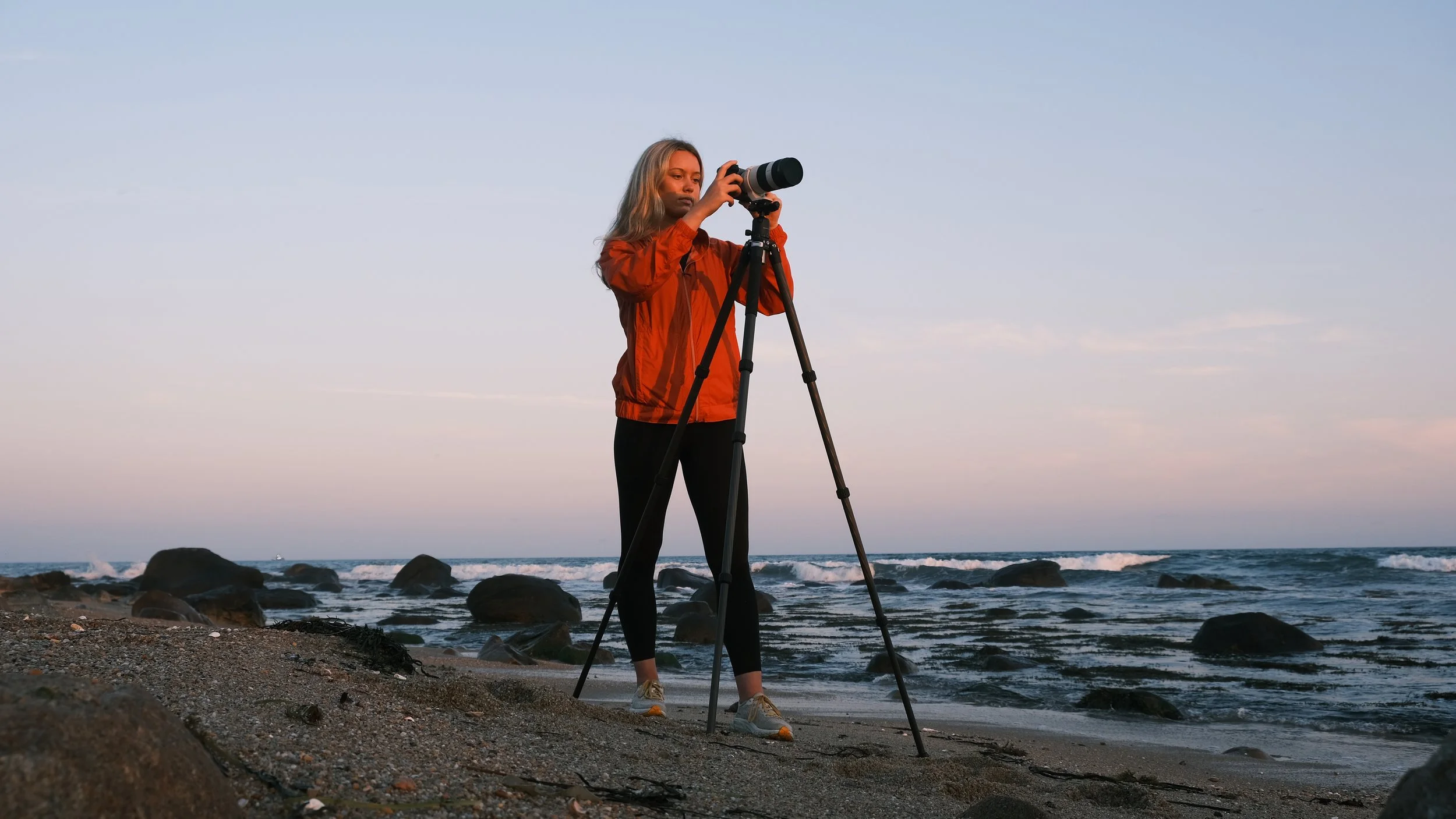ProMaster Video Tripod Lineup
Despite all having three-legs, not every tripod was made with the same use case in mind. For many, a general purpose photo tripod like an XC-M 528 or a Specialist 425 can cover all of their needs. There are certain circumstances that call for more stability and more camera control: enter the video tripod. Video tripods, as you would expect, are designed with video production in mind. Offering more weight capacity and better camera control, these can be a very helpful tool when looking to upgrade your production.
What’s the Difference between a Video and Photo Tripod?
At their core, both video and photo tripods are used to achieve a common goal: stability. When, where, why, and how each can be used can differ greatly however, as each has its time and place.
At a glance you’ll notice that video tripods generally come with a twin-tube leg design. Although there are 3 independent “legs” each singular leg is made up of a tubular design that provides added stability over a single leg design you would see on most photo tripods. Most video tripods will offer a singular latch or twist to unlock the legs making for quicker deployment. Photo tripods will often utilize several twist locks or leg clamps making them slower to deploy. Despite this, however, photo tripods are generally more compact and easy to travel with. You will often see video tripods sporting what is called mid-level or ground-level spreaders. The purpose of a spreader is to provide added stability and to prevent the tripod’s legs from collapsing.
Another difference you will notice immediately is the head design. True video tripods offer a fluid head while photo tripods generally come with a standard ball head. Fluid heads allow you to create smooth panning and tilting motions. This is perfect for when you are trying to track a subject or are trying to make your shot more dynamic by adding motion. These heads are accompanied by a control handle, further aiding in the control of the camera operator.
At the start of our video tripod lineup we have the 24P. We cleverly named the tripod after, you guessed it, 24 frames per second. An ode to the most commonly used frame rate amongst videographers and cinematographers. Right away you will notice a twin-tube leg design that can be found across an array of video tripods. We felt this was a great platform to build off of given its ability to provide consistent, reliable stability. A mid-level spreader has also been provided, further assisting in the deployment of the tripod. The benefit of a mid-level spreader is the ability to work on uneven terrain whereas a ground-level spreader can impede your flexibility when working on anything but level ground.
Atop this we have a fluid head with independent pan and tilt locks as well as drag control to help fine tune the speed of your movements. If you find yourself on an uneven surface you can quickly level your shot with the 75mm leveling bowl, an industry standard. You will also notice a pair of mounting ports in both 1/4"-20 and 3/8"-16 sizes, allowing you to easily attach accessories to your tripod when needed. The 24P is an excellent addition for those looking to step up from a standard photo tripod and elevate their production value.
Here are a quick breakdown of the tech specs:
Maximum Working Height: 71 1/2" / 181.6 cm
Minimum Working Height: 29 1/2" / 75 cm
Folded Length: 33 1/2" / 85.1 cm
Maximum Load: 11 lbs / 5 kg
Weight: 8 lbs 10 1/2 oz / 3.92 kg
3-Stage Aluminum Legs
Stepping up in both size and capability, the 30P is perfect for those looking to run a heavily rigged out camera. Offering a similar leg design to the 24P, you can be sure that stability will not be an issue. Right away, however, you will notice that there is a difference in the locking mechanism of the legs. The 30P offers a pair of clamps on each leg, making deployment faster than that of the 24P. The foot design of the 30P also differs slightly as the spiked feet can be revealed by removing the soft covers. These covers also double as self leveling feet when shooting on flat ground.
With a robust fluid head accompanied by a pair of control arms you’ll find that this tripod will feel right at home alongside the 24P. While they offer very similar specifications, if you are running a camera setup that will be accompanied by heavy glass, monitors, audio equipment, and any other gear you can attach to your camera, we’d recommend looking into the 30P.
Here’s a quick breakdown of the the tech specs:
Maximum Working Height: 72.9” / 185.2 cm
Minimum Working Height: 34.2” / 86.7 cm
Folded Length: 35.5” / 90.2 cm
Maximum Load: 13.25 lbs / 6 kg
Weight: 9.8 lbs/ 4.48 kg
3-Stage Aluminum Legs










